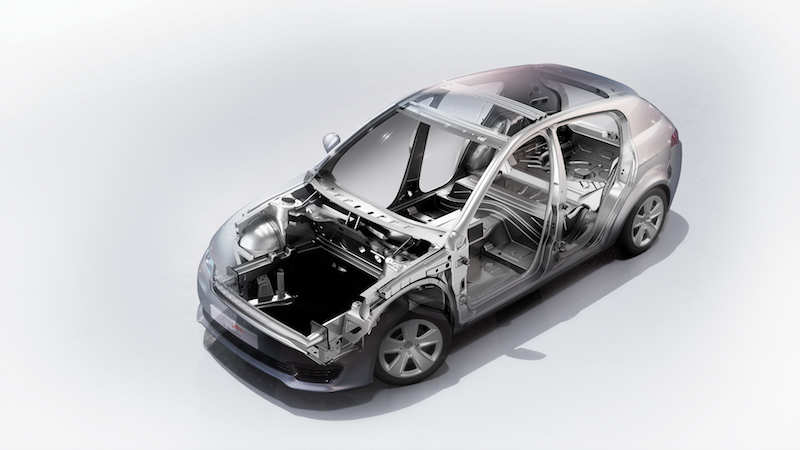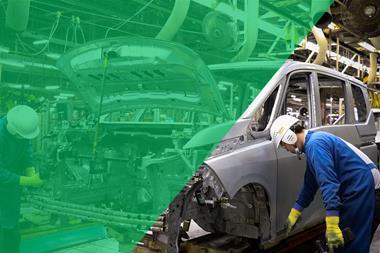
ArcelorMittal provides an insight into how the trend of electrification will impact steel demand in vehicle design
 Last year marked the first on in which global sales of electrified vehicles exceeded one million units. Although the numbers are still a long way behind sales volumes of conventional internal combustion engine (ICE) models, there are expectations that they will make up a quarter of all new car sales by 2025. These electrified vehicles are likely to be very different to the models available today, but steel will still play a critical role in design.
Last year marked the first on in which global sales of electrified vehicles exceeded one million units. Although the numbers are still a long way behind sales volumes of conventional internal combustion engine (ICE) models, there are expectations that they will make up a quarter of all new car sales by 2025. These electrified vehicles are likely to be very different to the models available today, but steel will still play a critical role in design.
In early November 2017, the EU announced its emissions targets for the period from 2025 to 2030. This will see average fleet emissions cut to just 66 grams of CO2 per kilometre by 2030, 30% lower than 2021. Many European countries have also decided to ban sales of ICE-powered vehicles by 2040. Other governments around the world are tightening their regulations while targeting fast growth in electrification at the same time. These factors are increasing the sales of electrified vehicles dramatically.
In many established markets, the most popular electrified vehicles are typically hybrids. They combine an ICE with an electric engine to maximise range. In other regions where personal mobility options have traditionally been limited, such as China, battery electric vehicles (BEVs) dominate the market. One of the limitations of BEVs has been the weight of the battery and extra reinforcement needed to protect it during a crash, which can be up to 700kg.
Protection and stiffnessPositioning this mass in the vehicle has also been a major challenge for car designers. The most common approach is to keep the battery low in the vehicle. Advanced high strength steels (AHSS) are enabling OEMs to provide the protection required, but without adding significantly to the weight of the vehicle. Steelmakers including ArcelorMittal offer press hardenable steels (PHS) such as Usibor with strengths up to 2000 megapascals (MPa). High strength cold stamping grades are also available in strengths up to 1180 MPa.
Stiffness is another consideration for OEMs. To mimic the handling performance of an ICE, the stiffness of the chassis and wheels in an BEV must be increased. AHSS solutions ensure stiffness performance is maintained without additional weight.
AHSS is also the preferred material to house and protect the battery in the event of a crash. The unmatched strength and ductility of the steel used in this application absorbs more energy during a crash. Thanks to their very high strength it is possible to reduce the thickness of the protection and housing systems. Intrusion resistance is still enhanced, but the space dedicated to batteries can be increased. This allows OEMs to use larger batteries and increase range – one of the biggest limitations of BEVs. Reducing the weight of an BEV by 100kg only improves range by around 6km to 11km depending on the size of the vehicle. The same range increase can be obtained by increasing battery capacity by 1.1 to 1.2 kilowatt hours (kWh).
The cost conundrumIncreasing battery capacity by one kWh typically costs around $123.58. OEMs must assess the cost of utilising more expensive materials to save weight against the cost of a positive increase in battery capacity. Today, AHSS steels are still a more cost-effective solution to increase range. Carmakers are recognising this, leading to a major usage of steel in EVs. The body and chassis of Tesla’s new Model 3 mass-market vehicle is a blend of steel and aluminium (unlike the Tesla Model S which has an aluminium body). The body-in-white of the Chevrolet Bolt is composed of 86% steel, including 44% AHSS. These OEMs are using the advanced lightweighting potential of steel to achieve their range goals.
One of the megatrends steelmakers are watching closely is the development of battery technology. While existing lithium-ion (Li-ion) technology is likely to dominate for the near future, solid-state and graphene batteries are under development. These technologies have the potential to make batteries smaller while extending vehicle range. However, they come at a higher cost than Li-ion technology.
The improvements in battery performance will have an impact on lightweighting: a small increase in battery efficiency is likely to be a more cost-effective way of increasing range than lightweighting with alternative materials. With less emphasis on lightweighting due to battery technology improvements, alternative materials to steel become much less interesting for automakers. Steel will be the most cost-effective material for vehicles and will remain the material of choice.
Motors and generatorsAnother way to increase range is to improve the efficiency of electric motors and generators. ArcelorMittal has developed the iCARe range of electrical steels specifically to address this issue. Three grade families have been developed:• iCARe Save is typically used in stators to optimise the use of current and therefore improve range.• iCARe Torque offers high permeability and allows the stators of motors and generators to achieve the highest mechanical output.• iCARe Speed is a range of very high strength steels for rotors. Their excellent resistance allows motor to be more compact.
It’s important to note that there are many motors in modern vehicles. They drive functions such as windows, seat adjustors, and the motor itself. They all must be light and compact to maximise vehicle performance and range.
During 2017, ArcelorMittal released the second generation of iCARe steels which are lighter and offer improved performance following customer demand, and is already working with customers around the world to develop the third generation of iCARe. By 2030, when new regulations come into effect around the world, autonomous vehicles and automated car sharing services are likely to be more common. In turn, this will increase the number of EVs on the road significantly.
However, this is unlikely to result in a fall in the amount of steel used in their construction. Vehicle autonomy will not prevent all accidents. Weather and human drivers on the road are just two of the challenges that need to be addressed through passive safety solutions. At the same time, steelmakers such as ArcelorMittal will continue to improve the strength of their offer, ensuring that steel will maintain its dominant position in mobility.







































